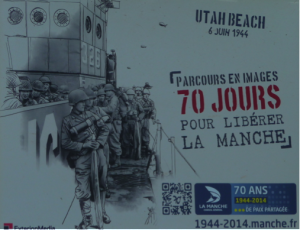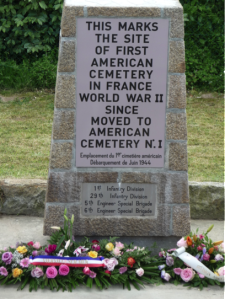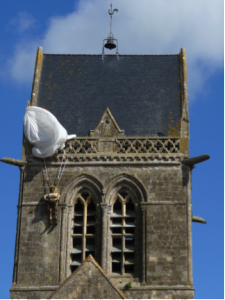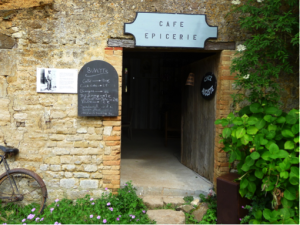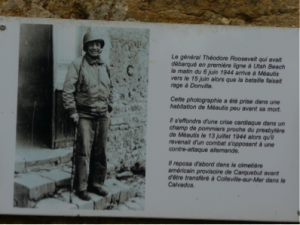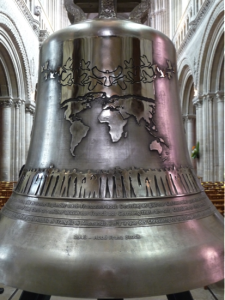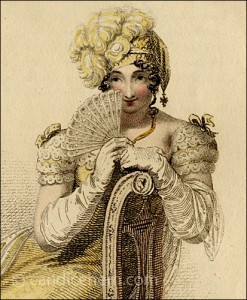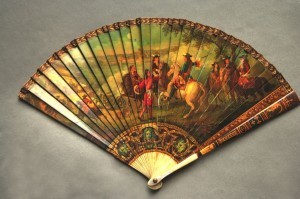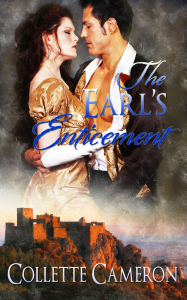L.B. Joramo's Blog, page 4
September 10, 2014
Becky Lower and Fencing in the 19th Century
I’m so thrilled to be back and have historical fiction writer Becky Lower talking about fencing. Not only is this an amazing article, but for all the Regencies out there with sword fights might want to rethink things. Here’s some fun music to listen to while you peruse (I always imagined this song with fencers, but imagine my surprise at seeing the video). And now, here’s Becky!
Fencing in the US in the 1850s
When I began writing my most recent historical romance, I had a clear idea of the heroine. Rosemary Fitzpatrick had already appeared in a cameo role in an earlier book in the series, as an author, so I had her figured out. She would be a quiet, yet feisty, author of the popular dime novels printed in the late 1850s, masquerading under a male pen name.
The hero, however, was another story. I wanted him to be a strong, yet scarred blue-blood from Boston. So I came up with the idea that he was a fencer. The fact that I had a schoolgirl crush on an epee fencer helped a lot in a physical description of the character. But when I began researching fencing schools in the late 1850s, that’s when things really began to get sticky.
None of the Ivy League schools in existence at that time had fencing clubs or offered instruction. I quickly hopped the pond, thinking I could send my hero off to boarding school in England, where he could pick up a blade. Alas, that didn’t work either, since fencing didn’t become popular at Eton until the 1880s. Whatever was a boy with an interest in fencing to do?
In desperation, I emailed the Museum of American Fencing in Shreveport, LA. The curator of the museum emailed back, telling me the only place a person could get fencing instruction in the United States in the late 1850s was in New Orleans, where there were fifty fencing masters teaching the art. Most came from France.
My Boston Brahmin was morphing before my eyes, into one with a French mother. That could cause all kinds of scandal in proper Boston, and would be a good reason for the children to develop scars, as society turned away from them. My hero began to take shape. He would be tall, with an olive complexion, big brown eyes, and hair as dark as night. He’d wear it long and pull it back into a queue. And, because he resembled his mother, he’d be banished to New Orleans after her death, so Boston wouldn’t be reminded of her. Yes, he resembled my fencer from college, but that only made him more believable, at least in my eyes.
This is part of why I love to write historical romances. You never know where your research will take you, or how it will impact your story. I had thought finding a place where a young man would receive fencing instruction would be an easy process. Instead, it turned my story on its head, and the end result was a glimpse into America’s history in 1859.
Please check out Becky’s latest . . .
Please scroll over the image to take you to a bookstore . .
August 20, 2014
Historical Author Jacqui Nelson talks about Bat Masterson
Hi, everyone! Today I have Jacqui talking about how she came to have Bat Masterson in her latest release. Here’s some music for you to enjoy while reading. And now here’s Jacqui . . .
Thanks so much for inviting me to be your guest again, Lani!
When I was researching my novel Between Love & Lies (releasing September, 2014) I found many real-life (and larger-than-life) characters who intrigued me. One of those characters was legendary frontier lawman Bat Masterson.
Who was Bat Masterson?
Bat was a U.S. Marshal, buffalo hunter, army scout, gunfight, gambler, and a sports editor/columnist for the New York Morning Telegraph. Born in 1853, Bat’s real name was Bartholomew although he later called himself William Barclay Masterson. Of Irish decent, Bat was the second child in a family of five brothers and two sisters. He lived on farms in Quebec, New York, Illinois, and Wichita, Kansas before he struck out with two of his brothers to become a buffalo hunter…and that’s where he met Wyatt Earp.
Why did Bat Masterson catch my attention?
My novel, Between Love and Lies, takes place in Dodge City, Kansas, during the heyday of the cattle drives.
Dodge was coined the “Queen of the Cow Towns,” but it wasn’t a pretty place. It was a rough town overflowing with cowboys fresh off the trail (freshly paid as well) and every sort of scoundrel eager to take their money. Dodge needed honorable men (with steady hands and hearts) who could keep the peace.
The year before my story starts, Bat was involved in his first gunfight in Sweetwater, Texas. He was attacked by a soldier over a girl. The solider shot both the girl and Bat, but while Bat reco vered the girl did not. The soldier died as well.
vered the girl did not. The soldier died as well.
That same year, Bat arrived in Dodge City and butted heads with the local marshal over the treatment of a man being arrested. Bat was jailed and fined. His fine was later returned by the city council who eventually asked Bat to serve as their lawman alongside the friend Bat had met many years earlier, Wyatt Earp.
How did Bat Masterson become a character in my novel?
Bat had a sharp wit. He was also reported to be a practical joker with a wicked sense of humor. He is quoted as saying: “Every dog, we are told, has his day, unless there are more dogs than days.”
I decided Bat need to have another “day” and help my hero, Noah, in his quest to right the wrong he’d done when his herd of longhorns bound for Dodge destroyed my heroine, Sadie’s farm. That single catastrophic event put Sadie on a path of sin as saloon singer in Dodge.
When I learned Bat may have lived with a lady friend (an ex-saloon girl) during his stay in Dodge, I knew he could give Noah the best advice…even if that advice was completely unwanted. But that wouldn’t stop a man like Bat. He’d be determined to help Noah and Sadie, whether they wanted his assistance or not.
So, without further ado, here’s my cover, a blurb and an excerpt from Between Love & Lies. Today I’m sharing a never-before-seen excerpt featuring Bat Masterson. I hope you enjoy Noah and Sadie’s story—and Bat’s too!
Between Love & Lies – Blurb
In a town ruled by sin, will he earn her love or her lies?
Sadie Sullivan lost everything when a herd of longhorn cattle bound for Dodge City trampled and destroyed her farm. Now she works in Dodge—one of the most wicked and lawless towns in the West—at the Northern Star saloon. But her survival in this new world of sin and violence depends on maintaining a secret so deadly it could end her life before the town of Dodge can.
The one man capable of unraveling all of Sadie’s secrets is Noah Ballantyne, the Texan cattle rancher whose herd destroyed her home. Back in town and taking up the role of Deputy Marshall, Noah vows he won’t leave until he’s put things right. But with the Northern Star’s owner unwilling to let her go and a rival rancher plotting to claim her for his own, things won’t be easy…especially with Sadie resisting him every step of the way.
Between Love & Lies –Excerpt
Dodge City, Kansas – 1877
Elbows propped on the jailhouse desk and fingers laced under his chin, Marshal Masterson appeared bored, as if he were at a Sunday social that had gone on too long. Noah wasn’t fooled. The lawman’s gaze was sharp as steel, assessing him.
“Appears yer pretty handy with a gun.” Masterson’s frontier drawl couldn’t conceal the lilt of his Irish ancestry.
“Heard tell you are, too,” Noah replied, striving for a casual tone. “You made a name for yourself with that gunfight in Sweetwater.”
Masterson leaned back and flicked his hand dismissively. “That was Texas, this is Dodge. The difference is I’m the law here. If I shoot someone, no one bothers me ’cause I’ve officially signed on as a lawman. Understand?”
Noah shrugged and let his gaze wander around Masterson’s headquarters. Two jail cells lined one wall and a rack of polished rifles hung on the wall behind Masterson.
The marshal reclined even further in his chair and propped his feet up on the corner of his desk, at ease, as if he’d made a decision. “You got plans to stay awhile in Dodge?”
Noah shrugged. “Maybe.”
Masterson snorted. “Yer a difficult son of a bitch,” he said, jabbing his finger at Noah. “That much’s certain. So, I’ll get right to the point. Dodge needs—” he turned his finger on himself, “—I need another hand in this marshalling business.”
“What exactly are you asking?”
“You interested in being my deputy? And helping me live to see November?”
Despite cautioning himself not to react, Noah sat up a little taller. Become a lawman? He respected Masterson, so assisting the man wouldn’t be a hardship. When he’d left Texas two months ago, he hadn’t expected to remain in Dodge for more than a handful of days. But the minute he’d walked into the Northern Star Saloon his plans had blown away like tumbleweeds across the open prairie.
“I can’t leave,” he admitted.
“Because of the little redhead over at the Northern Star.”
It was a statement, not a question, but Noah still found himself nodding.
Masterson blew out a low whistle. “You got an uphill battle with that one. I should know, ’cause I got a similar challenge. My Lizzie used to work in a saloon in Ellsworth. Now we’re living together over at the Dodge House. But Miss Sadie…she has a nature not often found in her profession. Can’t count the number of times I seen her blushing like a schoolmarm. Draws a man in, makes him wanna haul her down to the preacher’s.”
Masterson dug in his desk drawer and tossed a silver star onto the desk. It landed with an unsettling ping. The light from the oil lantern caught the metal, glimmering as the badge spun in a circle before finally coming to rest between them. “Being a Deputy Marshal might give you an edge in settling whatever business you got with her.”
“Might get me killed.” Despite his words, Noah had already picked up the star.
Author Bio
Jacqui Nelson writes historical romantic adventures set in the American West and Victorian London. Her love for the Old West came from watching classic Western movies while growing up on a cattle farm. Her passion for Victorian London wasn’t far behind and only increased when she worked in England and explored the nooks and crannies of London on her weekends. She now lives on the west coast of Canada where she works in a bookstore. She is a Romance Writers of America® Golden Heart® winner and three-time finalist.
Jacqui’s debut release was Adella’s Enemy, a novella featuring a feisty female spy and an Irish railroad foreman. Adella’s Enemy can be read on its own or as part of the Passion’s Prize anthology inspired by the hit Western TV series Hell on Wheels. Available in e-book http://bit.ly/AdellasEnemyKDPS and print http://bit.ly/AdellasEnemyCS)
Between Heaven & Hell (released June 2014) won a Golden Heart® award for historical romance in 2010.
Available in e-book http://bit.ly/BHHkdp and print http://bit.ly/BHHcsp
Between Love & Lies (releasing September 2014) was nominated for the 2013 Golden Heart®.
To learn more about Jacqui and her writing, please visit…
www.amazon.com/author/jacquinelson
www.goodreads.com/jacquinelson
www.facebook.com/JacquiNelsonBooks
August 13, 2014
Cynthia Owens shares with us Irish graveyards . . . Spooky fun!
Hi, all! I actually love graveyards. I’m a macabre nerd, what can I say? Anyway, when I visited my sister in Vermont I stole away to the graveyards where I found many graves older than Vermont was a colony. Today, Cynthia shares with us what Irish towns looked like and an old Irish story based on respecting graveyards. Here is some music to listen to while you peruse! Here is Cynthia!
Of Ghosts and Graveyards
Hi Lani, and thanks so much for having me back here again so soon! I’m so happy to announce the August release of Everlasting, Book IV of the Claddagh Series. It’s Shannon Flynn’s story, and it’s a return to Ballycashel, the small, wind-swept west of Ireland village where the first two books of the series, In Sunshine or in Shadow and Coming Home, were set (Book III, Playing For Keeps, took heroine Katie O’Brien on an American adventure).
There are so many unique facets to an Irish village—the village pub, the shop that sells everything from candles to flour to animal fodder, the Big House, the agent’s house, the tiny cottages with their whitewashed walls and thatched roofs and, of course, the church.
There are two churches in Ballycashel, the present one where the villagers worship, and St. Gerald’s, the ruined church sacked in the time of Cromwell. And behind the church is the old graveyard… 
St. Gerald’s Church.
What was it about this ruined sacred place that drew her so? Even before she and Mike had met here, on the border between Ballycashel and Trasnavan, she’d never been frightened of those who slept here. ‘Twas almost like being watched by loving, gentle, benevolent souls. Indeed some of the Flynns rested here.
Of course, it’s well-known that visiting a graveyard at night can be dangerous, and especially in Ireland. If you visit a graveyard in the dark of night without paying proper respect to those sleeping there, you might find yourself face-to-face with… Well, let me tell you that story. 
…There were cattle thieves in the area, and the landlord hired a boy to watch his herd at night. The lad did a fine job, and no cattle were lost over the next few weeks. The landlord was well-pleased with his young guard, and paid him well for his time.
But one misty night, when a soft, gentle rain fell over the village, the lad huddled wet and miserable before the herd of cattle. He was tired after a long day working his parents’ farm, and he began to shiver with the cold. His gaze traveled longingly toward the graveyard.
Ah, sure, ‘tis only a stone’s throw away, the lad thought. I can easily see the cattle from here. I’ll take shelter beneath the big yew tree, and no one will be the wiser. So he sat with his back braced against the trunk of a giant yew tree, and he was very comfortable. 
But as he sat in the mist and quiet of the dark, the only the sounds the call of the night birds and the rustling of the leaves on the trees, the lad’s eyes grew heavy. Soon his head lolled on his chest and he drifted into a dreamless sleep.
Smack! The lad jerked upright, hitting the back of his head against the tree trunk, his cheek stinging. A lady had struck him across the face!
He blinked, looking around in confusion. No one was there. He brought a shaking hand to his stinging cheek. Who had struck him?
The lad never knew. But a mark in the shape of a lady’s delicate hand remained on his cheek forevermore…
There are many other such stories all over Ireland, all in a similar vein. The moral seems to be: Never enter a graveyard without paying the proper respect to those who sleep there.
Thank you so much, Cynthia! I loved that story! And here’s a bit about her latest release . . .
Where does justice end and retribution begin?
She was driven by anger
When her fiancé died trying to feed his family, Shannon Flynn vowed to punish those responsible…even if it alienated her from her family, even if it put her—and them—in danger.
He returned to exact revenge
Eight years after he was forced to flee his beloved Ireland, Liam Collins returns to Ballycashel to find his family devastated and the person he holds responsible for his exile dead.
Can these two wounded spirits come together to battle a common enemy? Or will anger and pride destroy them both?
You can contact Cynthia through these links . . .
Website: http://www.cynthiaowensromancewriter.com/
Facebook: https://www.facebook.com/AuthorCynthiaOwens?ref=hl
Twitter: https://twitter.com/Cynwrites1
Amazon Author Page: http://www.amazon.com/Cynthia-Owens/e/B003DQ1V2E/ref=ntt_athr_dp_pel_pop_1
July 30, 2014
St. Swithin Day, Summer, and Author Barbara Bettis
Hi, everyone! I have the lovely Barbara Bettis, author to medieval romance fiction, on my blog today. She’s talking about summer and the medieval holiday, St. Swithin. Here’s some mellow medieval Norwegian music to listen to while you enjoy reading through! Here’s Barb!
July is over—mid-year and, theoretically, mid-summer. A crucial month for crops. Gardens are thriving, and you’re hoeing and weeding so the fruits and veggies have room to grow. (Oh, how I remember those days!) Many garden crops and fruit are ready for the table.
Things weren’t so different in medieval England in July. Waiting…The heat and work of mid-summer—tending the gardens, hoeing, weeding. Hot, hard work by hand. Crops finally were coming on and the lean times were easing.
We think of July, of mid-summer, as a time of plenty. Cold weather is long over. Flowers have bloomed. Hay has been cut. But in medieval time, when life was tied to the land, last year’s food was gone by now, and many villagers had to forage for what they could until this year’s crops matured. They prayed for rain so the crops would be good—but not so much as to rot them!
In a society where the Church designated most of the holidays around saints, a major July celebration was tied to the seasonal weather cycle. To needed rain. St. Swithin’s Day. It fell earlier in July, however.
St. Swithin was Bishop of Winchester in the mid-800s. On his death bed one early July, he asked  that he be buried in the open, where rain could fall upon his grave and people walk over it. His request was granted for a few days, but church officials decreed the revered bishop should be moved to a place of honor inside Winchester Cathedral. On July 15, his body was moved—and rain began to fall. (Like so many such stories, various versions exist.)
that he be buried in the open, where rain could fall upon his grave and people walk over it. His request was granted for a few days, but church officials decreed the revered bishop should be moved to a place of honor inside Winchester Cathedral. On July 15, his body was moved—and rain began to fall. (Like so many such stories, various versions exist.)
A myth evolved from that incident: if rain fell on St. Swithin’s day, rain would fall for 40 days. If no rain fell, there would be no rain for 40 days A verse about St. Swithin’s Rain has made it down through the centuries: “St. Swithin’s Day, if it does rain/For forty days it will remain./St. Swithin’s Day, if it is fair/For forty days it will rain na mair.” (Isn’t there a similar belief for Easter?)
Incidentally, apples watered with rain and picked after July 15 are said to be sweeter and juicier. Dr. Madeline Cosner reported that apples (many from the year before) played a big role in St. Swithin’s Day activities, in observance of that tradition.
Speaking of celebrations, my debut medieval, SILVERHAWK is on sale, to toast my upcoming title set for release in September. Sir Giles and Lady Emelin’s story is an exciting journey with danger, intrigue, and love. He’s everything a proper lady should never want; she’s everything a bastard mercenary can never have.
Here’s the blurb:
Sir Giles has come to England to kill his father, who seduced and betrayed his mother. First, however, he’ll seek sweet revenge—kidnap the old lord’s new betrothed. But when Giles uncovers a plot against King Richard, he faces a dilemma: take the lady or track the traitors. What’s a good mercenary to do? Both, of course.
Lady Emelin has had enough. Abandoned in a convent by her brother, she finally has a chance for home and family. Yet now she’s been abducted. Her kidnapper may be the image of her dream knight, but she won’t allow him to spoil this betrothal. Her only solution: escape
Rescuing the intrepid lady—while hunting traitors—is a challenge Giles couldn’t anticipate. But the greatest challenge to Giles and Emelin is the fire blazing between them. For he’s everything a proper lady should never want, and she’s everything a bastard mercenary can never have.
Visit me at: http://barbarabettis.com and www.barbarbbettis.blogspot.com
https://www.facebook.com/BarbaraBettisAuthor
Find the book at
Amazon: http://amzn.to/1bQX3td
The Wild Rose Press: http://bit.ly/1bM6ua2
Barnes & Noble http://bit.ly/19O8cZS
Sources: The Medieval Farming Year Version 1.0, July 23, 1999 © Andy Staples, 1999
Medieval Holidays and Festivals: A Calendar of Celebrations, Madeline Pelner Cosman, NY: Charles Scribner’s Sons, 1981
July 23, 2014
The 9th Annual Dixie Kane Memorial Contest
Today I’m posting about a writing contest that you should enter! Here’s the info with a little music:
The 9th Annual Dixie Kane Memorial Contest
The Dixie Kane Memorial Contest is a literary contest in honor of the late Linda Kay West, attorney, who wrote as Dixie Kane. A member of SOLA and RWA for many years, Linda served in numerous board positions. She shared her knowledge of writing, publishing, and law generously as a speaker at SOLA’s meetings and conferences. SOLA created the Dixie Kane Memorial Contest to encourage aspiring writers to hone their craft and submit their work.
Sponsor: SOLA, the Southern Louisiana Chapter of RWA
Fee: $15.00
Deadline: July 15, 2014 July 31, 2014
Eligibility: Entrants do not need to be members of Romance Writers of America to enter.
Enter: Just a taste–the first five (5) pages double spaced and a synopsis (one page, single-spaced, not judged). No electronic submissions. Contest Entry Form (doc) or Contest Entry Form (PDF)
Categories:
Short/long series contemporary
Single title contemporary
Historical romance
Paranormal
Inspirational
Novel w/ strong romantic elements
Romantic suspense
Erotic romance
Judges: Experienced, trained, published/nonpublished.
Final Readers for first place entries:
Short/Long Series Contemporary, Rhonda Penders, Editor-in-Chief, The Wild Rose Press
Single Title Contemporary, Kathy Cottrell, Senior Editor Last Rose of Summer, The Wild Rose Press
Historical Romance, Allison Byers, Editor Historical Division, The Wild Rose Press
Paranormal, CallieLynn Wolfe, Senior Editor Black Rose, The Wild Rose Press
Inspirational, Nicola Martinez, Editor-in-Chief, Pelican Book Group
Novel w/ Strong Romantic Elements, Cindy Davis, Editor, The Wild Rose Press
Romantic Suspense, DJ Hendrickson, Editor, Champagne and Crimson Rose, The Wild Rose Press
Erotic Romance, Diana Carlile, Senior Editor, Scarlet Rose Line.
Prizes: $50 cash prize with tie breaker and special certificate for the overall highest score of all categories. Winners: First, second, third place, and honorable mention winners in each category will be announced on September 30, 2014. Also, first place winning entries will be sent to final judges for reading and potential requests for full or partial ms. First, second, third place, and honorable mention certificates. Winners will be announced in RWR, posted to SOLA’s website, New Orleans Times Picayune and other publications.
FMI: For entry form and rules visit www.solawriters.org
July 16, 2014
Alanna Lucas with images from Normandy, 70th Anniversary of D-Day
Hi, everyone! Today I have historical fiction writer Alanna Lucas talking about her time in Normandy during the 70th anniversary of D-Day this last June. It’s an amazing photo blog! Here is some music to listen to while you view through Alanna’s post. Now, here’s Alanna!
D-Day photo blog
This past June 6th marked the 70th anniversary of the D-Day landings at Normandy. My family and I were fortunate to make the journey to France to celebrate and experience this momentous event.
The region celebrated the anniversary with reenactments, special events, fireworks, and most important, honoring those who served.
Words cannot begin to express the atmosphere and the spirit, which infiltrated the region during the anniversary week.
I hope you enjoy a glimpse into our time in Normandy.

WWII veteran sharing his experiences landing on Utah Beach
The cliffs of Pointe-du-Hoc were the objective of the 2nd Ranger Battalion. The Rangers scaled the 100ft cliffs under fierce firepower. By June 7th, 1944 of the 225 Rangers, only 90 had survived.
Pointe-du-Hoc is preserved as a historic battlefield.
Sainte-Mère-Eglise- Private John Steele was the American paratrooper who landed on the church tower. He pretended to be dead, before Germans took him prisoner. He later escaped, rejoined his division and went on to fight, earning the Bronze Star and the Purple Heart.
Theodore Roosevelt, Jr. was the only general to land with the first wave of troops on D-Day. At age 56, he was also the oldest man. He suffered from numerous health problems, including heart trouble, and walked with the aid of a cane.
After learning that the landing craft had landed a mile south of their objective, he surveyed the area behind the beach to locate the causeways for the advance inland, and coordinated the attack on the enemy positions. His famous words were, “We’ll start the war from right here!”
On July 12, 1944, he died suddenly of a heart attack. Theodore Roosevelt, Jr. was a veteran of both the world wars, was the only man to serve with his son on D-Day, and was awarded the Medal of Honor. He is buried at the Normandy American Cemetery.
A symbol of peace and liberty, the new bell to commemorate the 70th anniversary was named after Therese-Benedicte de la Croix (née Edith Stein), a German Jewish philosopher, who was arrested and sent to Auschwitz where she died.

Normandy American Cemetery
Within the cross-shaped cemetery there are 307 unknown burials, forty-five sets of brothers, four women, three Medal of Honor recipients, and a father and son buried side-by-side.
Not separated by rank, officers and enlisted men are interred side-by-side.
July 9, 2014
Author Becky Lower talks about the Dime Novel
Hi, all! I have historical and contemporary author Becky Lower on my blog today! She’s discussing the revolution of publishing through the dime novel! So much fun! Here’s some music to enjoy while reading through. And now, here’s Becky!
Writing About The Dime Novel
When I began to write Book Six in my Cotillion Ball Series, I had already established that the
heroine, Rosemary Fitzpatrick, was a writer of dime novels. I knew about dime novels only because I kept bumping up against them when doing my research on the history of America for this series. This brief introduction to dime novels wasn’t enough for me to base my story on, so I began to dig deeper.
The Dime Novel, and its counterpart, the Penny Dreadful, as these books were referred to in England, were the precursors to today’s paperbacks and e-books. Although these dime novels didn’t have the world of romance as their primary focus, they did set the stage for the romance industry, as they were responsible for introducing reading for pleasure to the masses.
The invention of the dime novel was made possible by two things happening almost simultaneously. First, the evolvement of the printing press made possible mass production of books. Second, the populations of America and England were better educated and had more time to spend reading for pleasure.
Dime novels in America were rough-and-tumble books, mostly about the Wild West. The plots were sensational and melodramatic, making for lively reading among the streets of relatively tame east coast cities.
Upon reading about the plot lines and the melodrama of these types of stories, I decided my book would not be complete unless I included the dime novel Rosemary was working on during the period in her life when the book takes place. The melodrama she sets up for her hero, Harry Hawk, and the heroine, Penelope, mirror her own melodrama when she discovers her publishing house is being sold and she needs a face-to-face meeting with the new owner in order to get her contract renewed. The previous owner assumed she was male, since she had given herself the pen name of F.P. Elliott. So, Henry Cooper, the new owner, and Rosemary’s life mirror what’s happening in the novel with Harry Hawk and Penelope.
It was a definite challenge to write, but was a lot of fun. The Duplicitous Debutante, and the interwoven dime novel, Harry Hawk and the Tycoon’s Daughter, will both be available September 1, 2014. Mark your calendar.
Author Bio:
 Becky Lower has traveled the country looking for great settings for her novels. She loves to write about two people finding each other and falling in love, amid the backdrop of a great setting, be it on a covered wagon headed west in the 1850s or present day middle America. Historical and contemporary romances are her specialty. Becky is a PAN member of RWA and is a member of the Historic and Contemporary RWA chapters. She has a degree in English and Journalism from Bowling Green State University, and lives in an eclectic college town in Ohio with her puppy-mill rescue dog, Mary. She loves to hear from her readers at beckylowerauthor@gmail.com. Visit her website at www.beckylowerauthor.com
Becky Lower has traveled the country looking for great settings for her novels. She loves to write about two people finding each other and falling in love, amid the backdrop of a great setting, be it on a covered wagon headed west in the 1850s or present day middle America. Historical and contemporary romances are her specialty. Becky is a PAN member of RWA and is a member of the Historic and Contemporary RWA chapters. She has a degree in English and Journalism from Bowling Green State University, and lives in an eclectic college town in Ohio with her puppy-mill rescue dog, Mary. She loves to hear from her readers at beckylowerauthor@gmail.com. Visit her website at www.beckylowerauthor.com
Check out Becky’s publisher’s recent deal!
Bundlemania
Bundles are all the rage these days. From workplace romances to bad boys with tats, and all manner of romances in between, a bundle of books will certainly fill up your summer reading schedule. Here’s the latest from Crimson Romance. A bundle of historical romances, that span from Regency England to the Revolutionary War in America. Ten complete books for only 99 cents total. What a bargain! And just in time for those lazy summer days.
Release date: July 7, 2014
From Regency England to the American Civil War, from the Wild West to Viking battles for territory, Time After Time delivers the gallantry, the color, the passion of yesterday that captures every historical romance lover’s heart. Fall in love with these ten titles from some of Crimson’s brightest stars:
Elf Ahearn – A Rogue in Sheep’s Clothing Emma Barron – The Glass Orchid Elizabeth Meyette – Love’s Destiny Andrea R. Cooper – Viking Fire Ivory Lei – How to Wed an Earl Rachel Donnelly – Lady Broke Emma Barry – Brave in Heart Marie Patrick — A Treasure Worth Keeping Becky Lower – The Reluctant Debutante Elizabeth Boyce – Once a Duchess
Isn’t it time you returned to the bold, unforgettable historicals you love?
July 2, 2014
Pen names, name changes, and the power within them
Hi, all! Today I’m talking to you about names. This post is a bit more for my fellow writers out there, but I always share a bit of history too. Here is some music for you to listen to while you read along.
I think myself very lucky to live where I do, Montana. I grew up knowing that many of my frie nds
nds
had their Anglicized name, a name given to them at birth, and some would change their name from adolescent ceremonies or other events. In just Montana alone, from the few tribes I know, there are huge variances in name ceremonies. But one thing remains the same: Names hold power within them and mean more than one import. And knowing that, I would often feel a little deprived for having my name.
However, as I grew up I found that my first name meant heavenly light while my last was the small village my grandfather came from in Norway. That was pretty cool. But, oh, how I wanted more.

Heavenly Light in Norway, nice but . . .
In college I met my best friend who, ironically enough, has my same name, only spelled differently. Being that we were best friends, we hung out ALL the time. Working together, eating together, walking through campus together . . . and when one of us was called out, we’d both turn. After a few months our boss got fed up and started calling me Red. Granted, I’d always secretly loved my red hair, but given the nickname felt . . . powerful. I love the color red too, linking it with love and, weirdly enough, anger. All my life I’d resisted my anger, thinking it unladylike to feel. But that was the year I let myself first settle into anger. Don’t get me wrong. I’m not a rage-aholic. But I believe anger is one of the most healing and rewarding emotions we’ve got—a lot like love. It helped me into action, got me moving, and facilitated me to stop being afraid. That was huge!
So when I wanted a pen name to represent my romance genre writing, I grabbed ahold of Red. I am Red L. Jameson, and you can find my time-travel romance series coming soon!
What about for you? Do you feel power in your name? In your pen name? Why did you pick a pen name, if you have one? I want to know!
June 25, 2014
Collette Cameron with the Regency version of text messaging–fans!
Hi, all! I have Collette Cameron again. I’m so honored! If you ever wondered how the Regency gentlewomen and men texted and Twittered, well Collette explains how the fan helped with that. This is such a fun post! Here’s some music for you to enjoy while reading through. And now, here’s Collette!
Folding Fans-Historical Text Messaging
The well-dressed Regency lady wouldn’t dream of attending a formal evening affair without her fan in hand. The vintage equivalent of text-messaging, men and women were well-versed in the language of fans. 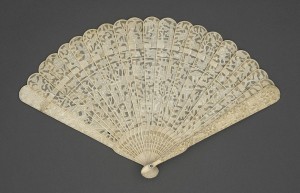
Hand fans originated in the Far East, some say Egypt, though the folding fans we are familiar with today are thought to be specific to Japan and were introduced to Europe in the 1500s.
I chuckled aloud at the lessons some ladies underwent in order to learn the proper way to unfurl or discharge their fans. Makes me think of sails on ships and firing guns. And as I’m sure you know, fans had their own romance language.
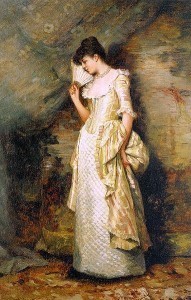 If a lady wanted to let a gentleman know he was a handsome hunk, she placed her folded fan against her chin. But should she hit an object, then she was letting him know she was impatient.
If a lady wanted to let a gentleman know he was a handsome hunk, she placed her folded fan against her chin. But should she hit an object, then she was letting him know she was impatient.
Quality fans weren’t inexpensive by any means. These popular accessories were made of a variety of materials. Bone, ivory, mother-of-pearl, tortoise shell, and wood were typically used to make the sticks, while the skin was constructed of paper, lace, silk, or—brace yourselves—chicken skin. Fans could also be made from feathers and were often exquisitely painted.
Regency era fans tended to be less ornate than previous generations, reflecting the simpler styles of gowns. There were different styles and sizes of fans too. The most common and popular fan was the folding fan, typically pleated and painted. This fan consisted of a rivet or pivot at the base which was connect to the guard. You know the long piece along the outside edge of the fan? The sticks (thicker pieces toward the bottom made of the same material as the guard, generally) merged into ribs to which the leaf (actual fabric/material covering the fan) was attached.
The brisé fan, which consisted of decorative sticks (often intricately carved) without pleated leaf, was the next most popular type of fan. It, too, originated in the Orient. The cockade fan, made of paper and having two sticks, opened into a full circle. Only the folding and brisé fan were used for evening events
Smaller fans, called opera fans, were petite enough to fit inside a reticule, though they often hung from a lady’s wrist. This type of fan was preferred during the Regency Era when the pockets of previous generations that easily accommodated larger fans no longer were in style.
I have a couple of gorgeous fans I picked up in Spain several years ago. I can’t imagine using those lovely treasures to send covert messages to my sweetheart across the room. I might put my eye out in the process.
All images are courtesy of Wikimedia commons
Resources:
http://janeaustensworld.wordpress.com/tag/language-of-the-fan/
http://candicehern.com/regencyworld/brise-fans/
http://www.susannedietze.com/dressing-the-regency-lady.html
http://myhandfan.com/language.htm
Collette always makes me laugh! Please check out her latest release! Click on the cover and it will take you to one of the bookstores you may buy it.
June 19, 2014
Author Cynthia Owens and Irish music
Hi, everyone! I’m thrilled to have Cynthia Owens with me today talking about Irish music from the old country and sung here in America during the 19th century! As many of you know, I’m a music lover, and I’m so fond of Irish music. So feel free to click here to enjoy some while you read through Cynthia’s post!
Hi Lani, and thank you so much for having me here today. I’m thrilled to be able to talk about My Dark Rose, the third book in my Wild Geese Series!
I call My Dark Rose my “musical” book for several reasons. First of all, it was inspired by a song. Isle of Hope, Isle of Tears tells the story of Annie Moore, a young girl from Ireland who was the first to pass through Ellis Island in 1892. Although my heroine, Róisín Donavan, arrived in New York City with her family several years before Annie Moore, her story is similar to thousands of Irish immigrants who fled Ireland for a better life in America and found hardship and prejudice instead.
Here’s a video of the song as performed by Celtic Woman:
Now the Irish brought few possessions from the old country, but one of the things they did carry with them was the traditions of story and song. And in Irish music, instruments such as the fiddle, tin whistle, harp, accordion and the bodhran mix and mingle and make absolute heart-wrenching music. Many of those songs were stories in themselves, telling of love lost and found, of battles fought, of everyday things.
Róisín grew up surrounded by this music. Her father always said she had the voice of an angel, and she has dreams of becoming an opera singer. But times are hard, and she has responsibilities. She’s lucky enough to be able to take voice lessons from a music professor, but in order to keep everyone fed and clothed, she takes a job at Paddy Ryan’s, a local Irish pub, where she performs as “The Galway Rose.” Her songs, though, are far from arias. Instead, they’re  “comeallyes,” songs from old Ireland that she learned at her father’s knee.
“comeallyes,” songs from old Ireland that she learned at her father’s knee.
I had a wonderful time researching Irish music for My Dark Rose. I had to find a variety of songs—after all, “The Galway Rose” couldn’t sing just one song! I already had a few of my own personal favorites, but I had to make sure that they were around in 1867. And I had to find the lyrics, so I could quote them during the story.
Here are some of the songs you might have heard Róisín sing of an evening at Paddy Ryan’s Pub. Pull up a pint and have a listen!
And Dary Greely’s favorite, The Last Rose of Summer
Róisín has a younger brother, Joe. He’s a bit of a scapegrace, and his voice tends to get better after a few pints of the pure. Here’s one of Joe’s favorite songs.
I hope you enjoy the craic (Irish for fun)!
He was the lucky one…
Dary Greely is the only one of his brothers and sisters to survive the hunger in Ireland and the coffin ship to America. He was the one whose parents made a bit of money, the one who emerged from the war virtually unscathed. He was the lucky one…but when the war ended, his luck ran out.
She was burdened by too many responsibilities…
Róisín Donavan is an Irish girl who lives in a Five Points tenement room. She dreams of a future as a great diva and sings Irish songs at Paddy Ryan’s Pub. But her stubborn Irish pride won’t allow her to abandon her family, even if it means sacrificing everything for them.
Can Dary make Róisín see her true worth? Can Róisín heal the festering wounds that tear at Dary’s soul? And can love truly mend their grieving hearts?
You can find Cynthia Owens at . . .
Website: http://www.cynthiaowensromancewriter.com/
Facebook: https://www.facebook.com/AuthorCynthiaOwens?ref=hl
Twitter: https://twitter.com/Cynwrites1










